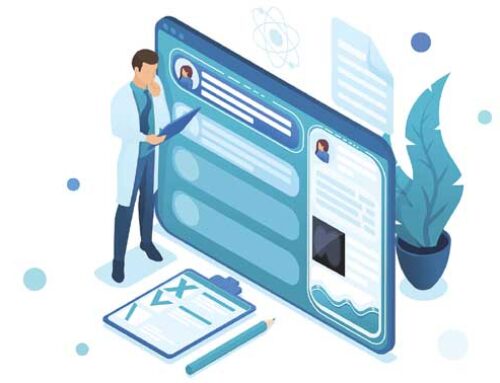 by Ann McNary, JD
by Ann McNary, JD
Ms. McNary is a Senior Risk Manager with PRMS, Inc., Arlington, Virginia
Innov Clin Neurosci. 2016;13(3–4):42–45.
This ongoing column is dedicated to providing information to our readers on managing legal risks associated with medical practice. We invite questions from our readers. The answers are provided by PRMS, Inc. (www.prms.com), a manager of medical professional liability insurance programs with services that include risk management consultation, education and onsite risk management audits, and other resources to healthcare providers to help improve patient outcomes and reduce professional liability risk. The answers published in this column represent those of only one risk management consulting company. Other risk management consulting companies or insurance carriers may provide different advice, and readers should take this into consideration. The information in this column does not constitute legal advice. For legal advice, contact your personal attorney. Note: The information and recommendations in this article are applicable to physicians and other healthcare professionals so “clinician” is used to indicate all treatment team members.
Question
When I first began my psychiatric practice, providing both psychotherapy and medication management was the norm. Now I find that my patients more often see a non-physician clinician for therapy. Despite the fact that I often don’t have a lot of communication with the therapist, this arrangement usually seems to work fairly well. What is difficult for me, however, is treating a more seriously ill patient—such as a suicidal patient—in a split-treatment relationship. In this situation I often feel as though I don’t have the whole picture and worry about how this will affect the patient—and my liability exposure. What can I do to better manage these situations?
Answer
Psychiatrists providing care within a split-treatment model frequently find that they have substantially less control over their patients’ overall treatment than they did in more traditional arrangements. Psychiatrists who only provide pharmacotherapy may discover that, as they have less individual patient contact, they have diminished knowledge of a specific patient’s baseline level of functioning, symptoms of concern, attitudes toward treatment, and psychosocial support system.[1] As a result, psychiatrists have become increasingly aware of, and increasingly concerned about, the potential for malpractice exposure related to such relationships.
In the best case scenario, split-treatment can enhance care and patient safety as it allows for closer patient monitoring using the separate expertise of two skilled clinicians. Patients themselves may appreciate the opportunity to draw upon the complementary skills each and to take advantage of a larger safety net of available coverage.1 Unfortunately, there are also those situations where the psychiatrist and the therapist don’t work well together, putting both patient and clinicians at risk. This is particularly dangerous when dealing with the suicidal patient.
Carefully Considered Collaboration
Of course the greatest concern in the treatment of the suicidal patient is ensuring the patient’s safety and thus the first step is determining whether split treatment is appropriate for a particular patient. Is it better that you, yourself, provide the patient’s therapy and necessary medications or is it preferable that the patient have a separate therapist and that you provide medication management? This may be determined in part by the availability of qualified therapists in your local area with whom you feel comfortable sharing the responsibility for a high-risk patient.
Unfortunately, it may also be determined by the patient’s insurance carrier. Psychiatrists often face conflicting responsibilities between determining what care a patient needs and, at the same time, complying with the cost containment requirements of the patient’s insurance company. Split treatment may in fact be the only option for certain patients.
Psychiatrists who have been in practice for a number of years may already have a cadre of therapists with whom they are comfortable sharing treatment. Other times, the patient will choose a therapist with whom the psychiatrist does not have a professional relationship—as is often the case with early career psychiatrists. Before agreeing to work with a therapist in a split treatment arrangement, you should seek answers to the following questions:
- Who is the therapist and what are his or her qualifications? Is the therapist someone who is known in the community? Do you have colleagues who have worked with him or her? Remember, not only are you dealing with patient safety issues, you are dealing with your own personal liability exposure; thus, it is imperative that you assure yourself that the therapist is up to the task of dealing with a complex patient. Find out the level of the therapist’s training. How many years has he or she been practicing? What is the therapist’s experience? Is he or she licensed? Does the therapist have malpractice coverage? Some of this information may be available on the therapist’s practice website or a “find a therapist” site such as Psychology Today. If this is not available, ask the therapist. To lessen the awkwardness, you might offer your information as a way of introducing yourself to the therapist and suggest that he or she provide the same to you.[2] If the therapist is reluctant to provide you with this information, you should carefully consider the risks of working with that therapist. In the event of a bad outcome and subsequent litigation, “[i]f a court is looking for a way to compensate an injured patient, it may hold the psychiatrist accountable for not knowing the therapist’s qualifications, … or failing to inform the patient of the therapist’s lack of qualifications.”[3]
- How often does the therapist plan on seeing the patient? Does the therapist have coverage for when he or she is not available? Can the therapist be reached in an emergency?
- What is your gut telling you? What is the temperament of the therapist. Managing a complicated patient requires a great deal of energy. Do you feel the therapist is up to the challenge? Are you up to the challenge of working with the therapist? Psychiatrists must learn to “identify psychotherapists with whom collaboration will be excessively difficult or impossible as a result of basic differences in clinical values, treatment approaches, personality styles or competence.”[1]
Collaboration itself draws upon a set of skills distinct from the standard diagnostic and treatment skills necessary to provide either psychotherapy or pharmacotherapy, and many psychiatrists have not been trained in this area.[1] Unless the clinicians are working in a setting where the clinicians see one another regularly (such as an outpatient clinic), and have computer-based charts available to all clinicians, safe and effective split-treatment will require a great deal of planning and thought.[4] To this end, you should determine the following:
- How will the two of you communicate? In person? By telephone? Via email? (if the latter remember that email messages should be made part of the patient’s chart.) How often will you be in contact? What information will be shared? Aside from the agreed upon routine contact, will there be certain events/situations that will trigger contact (e.g., missed appointments, medication changes, reports of suicidal gestures, loss of protective factors)? You should ensure that you have an ongoing awareness of the evolution of treatment as a whole.[5]
- Have you discussed and agreed upon your respective roles? While each will take the lead in their agreed upon role, you must be careful to avoid intransigence and not operate within rigid parameters. For example, if a therapist notes a negative change in the patient’s behavior following a medication change, he or she should be prepared to bring this to your attention. In order to facilitate this type of exchange of information, a bit of education may be necessary. If the therapist is not familiar with the medication(s) you have prescribed, explain the expected amount of time for it to take effect, possible side-effects, and drug interactions. If the therapist is unfamiliar with the medication’s strengths and limitations, he or she will not be able to help alert you to possible complicating side-effects.”[6]
- Is there a mutual understanding of the patient’s current status? Are there signs that each should watch for that would indicate a deterioration?
How will you handle potential conflicts? It is not uncommon for manipulative patients to try to pit clinicians against one and other by presenting vastly different information to each thus causing the clinicians to recommend courses of treatment that may be conflicting.
It may be helpful to memorialize your understanding of the treatment arrangement in a formal written agreement. It may also be beneficial to include the patient in this agreement so that he or she understands each clinician’s role, which clinician to contact in various situations, and how to otherwise manage expectations. As part of this agreement, confidentiality should be discussed. If the patient is unwilling to agree to open communication between clinicians, you will need to immediately determine whether the treatment relationship can survive as treatment with a patient who does not permit open communication of medically necessary information may not be clinically responsible or feasible.[5,7]
A Split in Split Treatment
For the successful management of the suicidal patient, it is important that there is a meeting of the minds and clear understanding of respective roles. As patient will likely be seeing the provider giving therapy on a more frequent basis, he or she may develop a closer bond with them than the psychiatrist whom they see less frequently for medication management. It is not unheard of for therapists to have their own ideas regarding medication which they share with the patient and which may or may not be in accordance with the recommendations of the psychiatrist.
Psychiatrists who find themselves in situations where their recommendations are being ignored by their patient and not being supported by the therapist should consider the feasibility of remaining in the treatment relationship. While it may be the psychiatrist’s clinical judgment that the patient would benefit from medication, he or she must consider whether another psychiatrist might have greater success in convincing the patient of this and whether continued involvement in the treatment relationship does anything further than increase the psychiatrist’s liability exposure.
Conclusion
The elements for increased liability risk are present in split treatment relationships, but each individual situation must be evaluated to understand its particular risk profile. The risk analysis must include the risks inherent in the treatment of the particular patient (What are this patient’s clinical needs?), coupled with an evaluation of the risks presented by the shared relationship (How does the split treatment complicate/increase problems in meeting the standard of care for this patient? Are there ways to manage those risks so that you are satisfied that patient care needs are being met?).
Risk management seeks to improve the quality of care provided to patients and to reduce legal liability. The most effective risk management strategy is to pursue a course of treatment that best meets the clinical needs of your patients. When split-treatment is a part of this, coordination and communication among clinicians is essential.
References
1. Ellison JM. Teaching collaboration between pharmacotherapist and psychotherapist. Academic Psychiatry. 2005;29:2.
2. Simon IS, Hales RE. Textbook of Suicide Assessment and Management. American Psychiatric Publishing, Inc.; 2006.
3. Mossman D, Weston CG. Splitting treatment: how to limit liability risk when you share a patient’s care. Current Psychiatry. 9(3).
4. Riba MB. Can a split-treatment model work? Psychiatric Times. 19(7).
5. Gutheil TG. Risk management at the margins: Less=familiar topics in psychiatric malpractice. Harvard Rev Psychiatry. 1994;2:214–221.
6. Goin MK. Split treatment: the psychotherapy role of the prescribing psychiatrist. Psychiatric Services. 52(5).
7. Sederer LI, Ellison J, Keyes C. Guidelines for prescribing psychiatrists in consultative, collaborative, and supervisory relationships. Psychiatric Services. 49(9).





